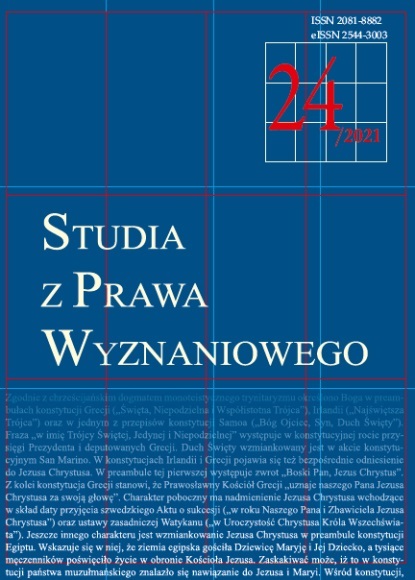Sztuka sakralna a prawo autorskie, czyli kilka uwag o zasadach korzystania z sakralnych utworów autorskoprawnych i wystawionych w przestrzeni sacrum
Sacred art and copyright: Some remarks on the rules of using copyrighted sacred works and works exhibited in sacral space
Author(s): Joanna PawlikowskaSubject(s): Law, Constitution, Jurisprudence, Architecture, Civil Law, Administrative Law
Published by: Katolicki Uniwersytet Lubelski Jana Pawła II - Wydział Prawa, Prawa Kanonicznego i Administracji
Keywords: sztuka sakralna; prawo autorskie; środowisko cyfrowe; dozwolony użytek; prawo panoramy;sacred art; copyright; digital environment; fair use; freedom of panorama
Summary/Abstract: The aim of the article is to investigate whether the existing findings in the field of copyright law, which may be applicable in cases involving the use of works of sacred art, remain up-to-date in the context of the dynamic development of technology and changing conditions for using creative works. So far, the research on the application of copyright law to religious activity has mainly focused on the use of works in the “analogue era”. However, part of religious activity has moved to the digital environment. Since it is necessary to adapt the established ways of using works of sacred art, the topic is now worth revisiting. The paper first deals with the issue of the so-called freedom of panorama, relating to the distribution of creative works exhibited permanently in public places. The subsequent part of the study discusses the problem of using works located inside sacred buildings or performed there. The indicated issues are particularly important from the point of view of conducting religious activity on-line. Therefore, it seems reasonable to consider: a) in relation to panorama law, changing the approach to the premise of the location of a work (i.e., the notion of external space should be broadly conceived as public space – a place accessible to the public); possibly analogously to the legal solutions of 1926, accepting the use of works inside a temple as part of fair public use; b) in relation to panorama law, understanding of the notion of staging in a broad manner and consequently accepting that works displayed on a permanent basis may also be covered by panorama law; c) introducing the category of a “religious event” and assuming that the use of works during such events could entitle their creators to be remunerated (contrary to what is the case with “religious ceremonies”).
Journal: Studia z Prawa Wyznaniowego
- Issue Year: 2021
- Issue No: 24
- Page Range: 359-378
- Page Count: 20
- Language: Polish

